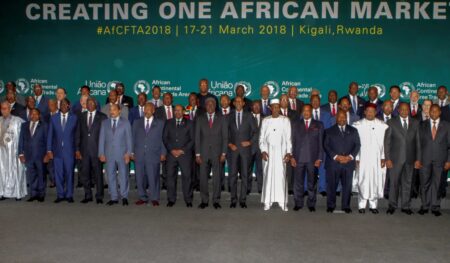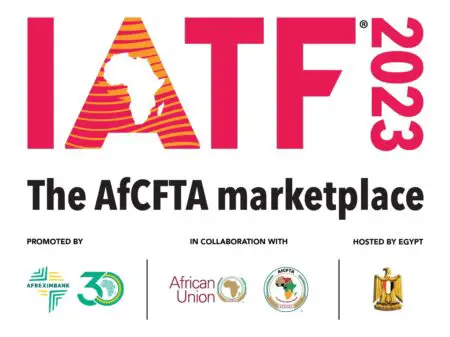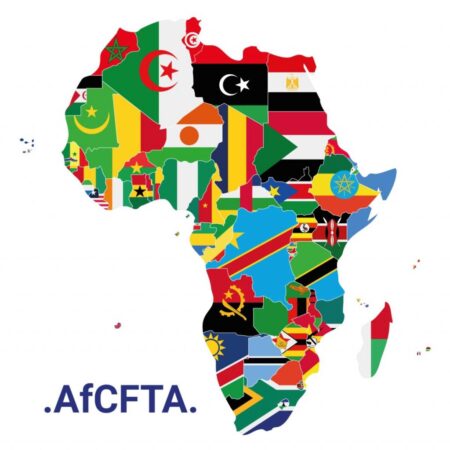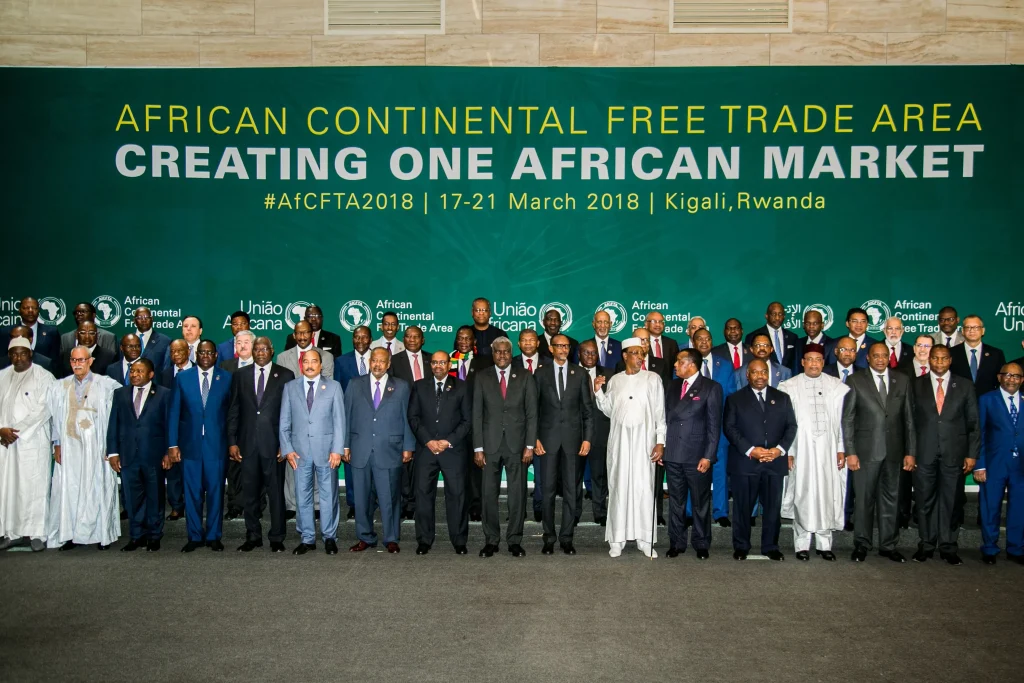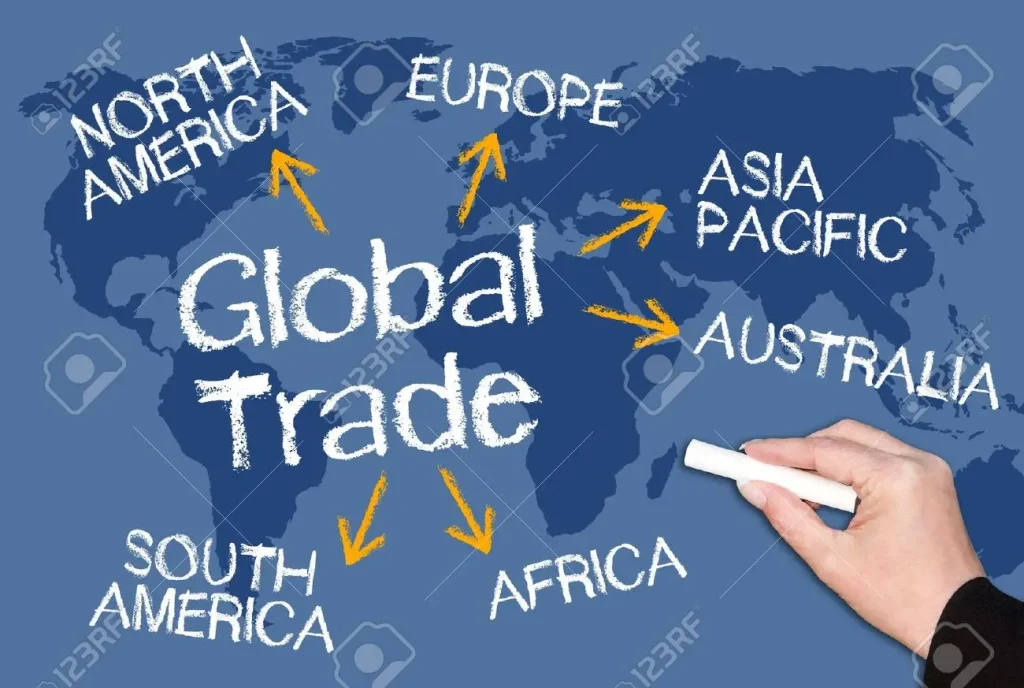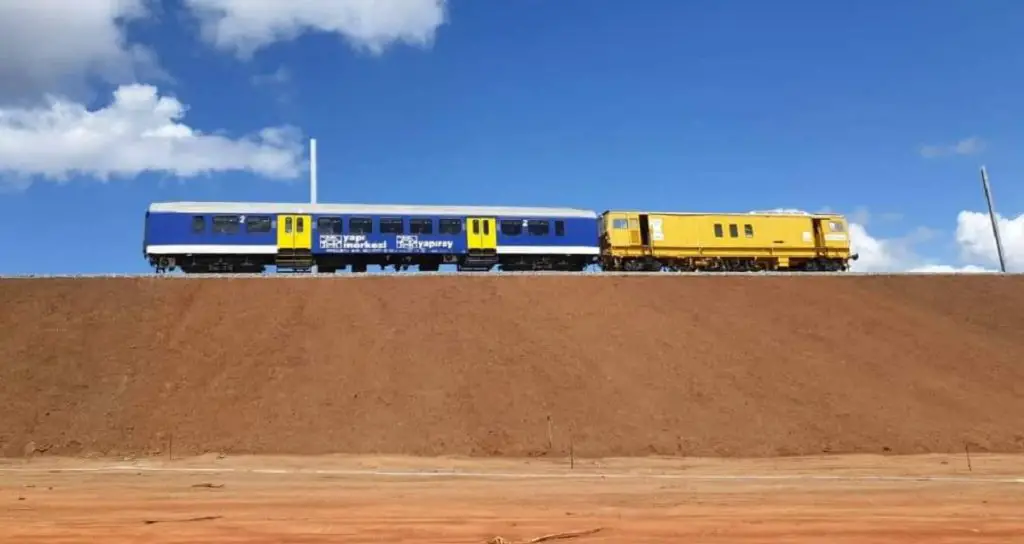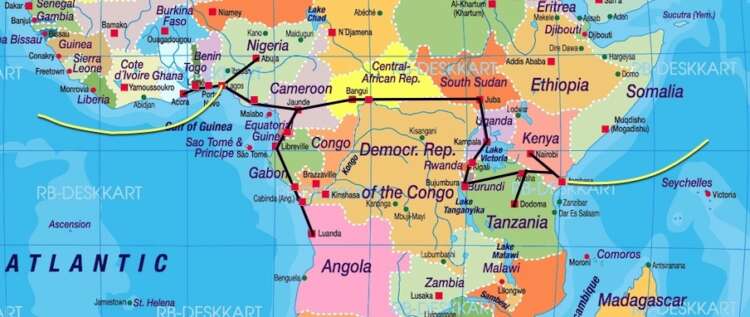- Africa’s new dawn: the rising role of digital and AI in agriculture
- Can Dangote Refinery Transform Africa Energy Ambition
- Gallup Survey: 80 per cent of Kenyan Workers Are Disengaged and Seek New Opportunities
- Madagascar Man Freed from 5KG Tumor After 15-Year Struggle
- How women in Africa are perceived and treated
- Sugar consumption in Kenya to Increase to 1.23 Million Tonnes
- Can Somalia and Turkey Oil deal Bring Change in Somaliland
- Remittances to Kenya dropped to $371.6 million in June, marking a six month low
Browsing: Intra-African trade
- Every so often, Africa is being forced to choose sides between China, Russia, and the West.
- However, to win big, Africa must speak in one voice and trade as a unit in the new world order
- What’s more, Africa’s vas resource endowments can strengthen the continent’s resilience of its Transatlantic Alliance.
From friend-shoring brought about by COVID-19, then the Russia-Ukraine war, and now escalations in conflict in the Gaza strip, a new world order is taking shape, and Africa must align itself.
The big question for Africa is who to ally with and who to forego. Alignments with China are almost unavoidable, yet they place African economies at loggerheads with the West. While support for Israel pays off, it turns African countries into easy targets for the increasingly complex terror networks taking root on the continent.
Then there is the need to diversify sources of food and fertilizer imports, and …
- About 130 countries participated in IATF2023, which attracted 1,939 exhibitors and 28,282 participants who attended physically and through the IATF virtual platform.
- The sheer scale of IATF2023 reflects a shared commitment to fostering economic integration and development on the continent.
- The next edition of the IATF will be hosted in 2025 by Algeria.
The African Export-Import Bank (Afreximbank) has announced that the third Intra-African Trade Fair (IATF2023) held in Cairo from 9 to 15 November witnessed the conclusion of business deals and transactions valued at US$43.8 billion.
IATF2023 brought together representatives from 130 countries, fostering collaboration and partnership in diverse sectors. With 1,939 exhibitors and 28,282 participants attending physically and through the IATF virtual platform, the trade fair emerged as a pivotal platform for connecting businesses across borders.
In a comprehensive breakdown, the organisers revealed that the concluded deals spanned 21 sectors and involved 52 countries. This extensive …
The African Continental Free Trade Area (AfCFTA) is now widely touted as the African Union’s (AU) most audacious project. The framework ties together the most significant number of member countries of any trade agreement since the World Trade Organisation (WTO) in 1995.
The AfCFTA had become topical even before its formal launch. Members of the business community eagerly awaited the full implementation of the AfCFTA. But two years since its formal launch, how far has the AfCFTA ushered in the ‘new era’ of African integration it promised?…
There appears to be a consensus that the world is finally turning its back on the US dollar. There are simmering shifts within the global monetary system. The shift becomes ever more apparent, best described as de-dollarisation.
The world is searching for alternatives to the US dollar, finding them more often. Thus, moving away from the dollar can no longer be stopped. For instance, early this year, Indonesia reiterated it would promote local currency settlement (LCS) in cross-border trade and investment to reduce dependence on the US dollar.…
Should a common currency in the EAC come to fruition, the trade will be fueled by a reduction, albeit limited, in transaction costs, the elimination of exchange rate risk and region-wide price harmonisation – all of which will undoubtedly be underpinned by policy incentives.
- Monetary Union is the third stage towards EAC regional integration, capped through Political Federation.
- Considering individual economies are relatively small, currency harmonisation might play a significant role in improving intra-African trade.
- The IMF, through its chief Christine Lagarde, previously warned the EAC not to rush into a currency union, pointing to the issues faced in Europe.
Interest in regional integration, including monetary, in Africa has remained intense over the decades since independence. Consequently, various regional groupings have been formed. Those initiatives were stimulated by the generally small size of individual economies. This led to a desire to promote economies of scale in production and distribution. A …
It is critical to strengthen a professional, independent supervision secretariat to make the AfCFTA agreement’s promise a reality. A strong secretariat can assist states in developing strong domestic institutions to administer, monitor, and enforce the AfCFTA. The moment for change has arrived. The conventional development models have failed Africa. The AfCFTA, on the other hand, signifies that Africa is open for business.…
Nations launched the AfCFTA as one of the actions made to support more extensive intra-African trade. The AfCFTA aspires to establish a unified continental market for goods and services. The agreement seeks to harmonise the continent’s various trade liberalization procedures and promote regional integration. Each African nation is a member of at least one of the continent’s approximately 30 bilateral or regional trade agreements.
Africa suffers from marginalization in the global trade system. Nevertheless, the African Regional Trade Agreements heralded a new age of economic integration with significant trade creation impacts. The path to free trade poses several significant obstacles and concerns that African governments must solve.…
Implementing the AfCFTA fully will increase intra-African trade through the elimination of import duties. By just reducing non-tariff barriers, intra-African trade could double.
The implementation of the Free Trade Area will lead to an increase in intra-African freight demand of around 28% by 2030 in comparison to a scenario without its implementation. Specifically, demand for road, rail, maritime and air freight will increase by 22%, 8%, 62% and 28% respectively.
According to the United Nations Economic Commission for Africa (ECA), the modal share on rail would increase from 0.3% to about 7% with Africa requiring close to 2 million additional trucks, over 100,000 rail wagons, 250 aircraft, and more than 100 vessels by 2030, if the AfCFTA is fully implemented.
Aircraft demand to support trade flows within West Africa will increase by 13.2% by 2030 while trade between North and West Africa would increase demand for aircraft by 12.9%. Within …
There are five key instruments adopted for the AfCFTA…
Africa’s share in the global US$3.4 trillion dollar e-commerce ecosystem is only 1.3 per cent with a big percentage of Africans having no access to the internet.…





